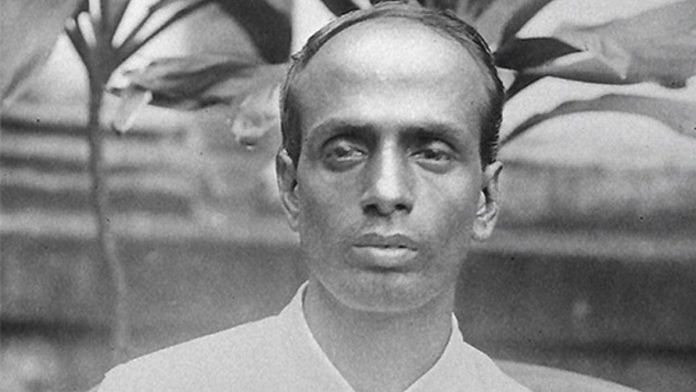One may recall a defiant, dhoti-kurta clad Abhishek Bachchan playing ‘Master da’ Surya Kumar Sen in Ashutosh Gowarikar’s 2010 film Khelein Hum Jee Jaan Sey. “Unhi ke hathiyaar, aur nishana bhi unhi ko banayenge” — we will make them the target of their own weapons, mouths Bachchan in one of the dialogues.
The film was based on the events of the 1930 raids in Chittagong (in present-day Bangladesh) led by Surya Sen. Many revolutionaries, under Sen’s guidance, attacked the British armouries. The attack was subsequently met with brutal repression by the British, leading to the hanging of ‘Master da’. It is said that the British were so angry that they first tortured Sen before hanging him and giving him a burial at sea. Sen’s body was brutalised for days and he was unconscious when he was hanged.
“Surya Sen, a brilliant and inspiring organiser, was an unpretentious, soft-spoken and transparently sincere person. Possessed with immense personal courage, he was deeply humane in his approach,” writes historian Bipin Chandra in the book India’s Struggle for Independence: 1857-1947. In fact, he is said to have often chanted: “Humanism is a special virtue of the revolutionary.”
Also Read: Vaikom Muhammad Basheer was the master of disguise. Writer to revolutionary, he did it all
Challenge to the British
Surya Sen believed in the power of armed rebellion. The 1930 Chittagong raids that he led were aimed at demonstrating that it was possible to challenge the ‘armed might’ of the British Empire.
In Bedabrata Pain’s 2012 film Chittagong, Ambika Chakrabarty, played by Dibyendu Bhattacharya, tells Surya Sen, played by Manoj Bajpayee, that occupying the entire city on their own was a pipe-dream and sheer lunacy.
Bajpayee, as Surya Sen, replies: “Precisely. This is exactly why we should do it…Everyone thinks the British are unconquerable. They cannot be defeated. Why should we not bust that myth now?”
Also Read: MN Roy, the Indian revolutionary who founded Mexican Communist Party
‘Master da’, a revolutionary
Surya Sen was born on 22 March 1894 to a teacher, Ramaniranjan Sen, and Shila Bala Devi at Noapara in Chittagong. In 1916, Sen imbibed revolutionary ideas through his teacher Shatishchandra Chakrabarti, while pursuing B.A. at Berhampore College (now Krishnath College) in Murshidabad, according to Banglapedia.
When Sen came to Chittagong in 1918, he started teaching at the local National School, becoming famous with the honorific ‘Master da’. Later, he left his job and became the president of the Chittagong branch of the Indian National Congress.
Sen actively participated in the Non-Cooperation Movement. He looted the treasury of Assam-Bengal Railway for cash money to fuel the movement, for which he was imprisoned with fellow revolutionary Ambika Chakrabarty for two years. Both were released towards the end of 1928 and resumed their activities.
Also Read: Hanged at 27, Ashfaqulla Khan was a revolutionary with fire in his belly
1930 Chittagong raids
Surya Sen organised a large band of revolutionary youth, including Anant Singh, Ganesh Ghosh, and Lokenath Bal, and established the Chittagong branch of the ‘Indian Republican Army’ in 1930. They plotted an armed revolution against the British.
On 18 April that year, 65 IRA revolutionaries, led by Sen, executed their plans to destroy the telephone and telegraph systems, break the railway communication between Chittagong and the rest of Bengal, and seize arms.
They captured the police armoury, dislocated the communication system, and disrupted the train movement. However, they could not locate the ammunition, which was a major setback. But before escaping the scene, they hoisted the Indian flag.
“All the revolutionary groups gathered outside the police armoury where Surya Sen, dressed in immaculate white khadi dhoti and a long coat and stiffly ironed Gandhi cap, took a military salute, hoisted the National Flag among shouts of Bande Mataram and Inquilab Zindabad, and proclaimed a Provisional Revolutionary Government,” says Chandra in his book.
The Chittagong raid influenced the people of Bengal immensely. “In the battle for India’s freedom, the Chittagong uprising of 1930 turned the tide, and brought in its wake a rising and a clamour for immediate Independence,” said Samuel Hoare, the British secretary of state for India between 1931 and 1935.
Also Read: Remembering Shaheed Udham Singh, the man who avenged Jallianwala Bagh
Guerilla attacks and betrayal by kin
Realising that the British would come down heavily after the raid, the revolutionaries left Chittagong and marched towards the hilly areas. Sen kept changing his identity to deceive the British and continued his activities from the Jalalabad hills. On 22 April 1930, thousands of British troops surrounded the hills, and in a fierce bloodbath, over 80 troops and 12 revolutionaries died.
After that, Sen scattered the groups in the neighbouring villages and kept conducting raids on government properties and personnel. “Despite several repressive measures and combing operations by the authorities, the villagers, most of them Muslims, gave food and shelter to the revolutionary outlaws and enabled them to survive for three years,” writes Chandra.
Sen even instructed Pritilata Vaddedar and Kalpana Dutt to destroy Chittagong jail by using dynamite in 1932, which was unsuccessful. That year, he also planned an attack on the Pahartali European Club, which bore the notorious notice: ‘Dogs and Indians not allowed’. He assigned Pritilata to lead the attack, which was successful, but her injury became the cause of her capture and she consumed cyanide before the arrest.
A tip by his own relative, Netra Sen, led to Surya Sen’s arrest on 16 February 1933. He was tried and hanged on 12 January 1934, along with Tarkeshwar Dostidar, who had hatched a plan to rescue him from jail. Many of his fellow revolutionaries were also caught and sentenced to long terms of imprisonment.
(Edited by Srinjoy Dey)



